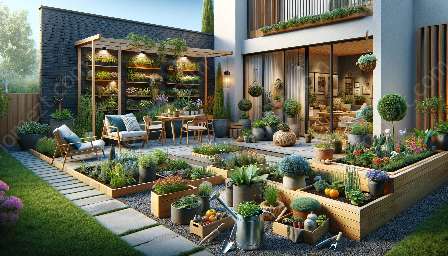Are you interested in finding a sustainable and efficient way to grow plants and vegetables in your yard or patio? Look no further than aquaponics. This innovative planting technique combines aquaculture (the farming of fish) with hydroponics (soil-less plant cultivation) in a symbiotic environment, creating a closed-loop system that benefits both fish and plants. In this comprehensive guide, we will delve into the fascinating world of aquaponics, explore its benefits, and learn how you can set up your own system to enjoy fresh produce right in your own backyard.
The Basics of Aquaponics
At its core, aquaponics involves raising fish in a tank, and using the nutrient-rich water produced by the fish to nourish and grow plants in a separate bed. The fish waste provides an organic food source for the plants, and in turn, the plants naturally filter and clean the water, which is then returned to the fish tank in a continuous cycle. This natural synergy creates a sustainable and self-sufficient ecosystem that requires minimal external input.
Benefits of Aquaponics
Aquaponics offers numerous advantages, making it an attractive option for home gardeners and urban dwellers alike. Firstly, it's a highly efficient and space-saving method, as it eliminates the need for separate aquaculture and hydroponic systems. Additionally, since the plants and fish coexist in a closed environment, the water consumption in aquaponics is significantly lower compared to traditional irrigation methods. Furthermore, this system produces both fish and vegetables, providing a complete and diverse range of fresh, organic produce.
Getting Started with Aquaponics
If you're intrigued by the idea of setting up your own aquaponics system, fear not. It's entirely possible to create a small-scale system in your yard or patio, even with limited space and resources. Start by selecting a suitable location for your system, considering factors such as sunlight exposure and access to water. Next, you'll need to choose the right fish and plants for your setup, ensuring they are compatible with the local climate and environmental conditions.
Setting up the physical components, such as the fish tank, grow bed, and plumbing, may require some initial investment and effort, but the long-term benefits are well worth it. Once your system is in place, it will require regular monitoring and maintenance to ensure that both the fish and plants thrive. Monitoring water quality, nutrient levels, and the overall health of the ecosystem is crucial for the success of your aquaponics setup.
Integrating Aquaponics with Planting Techniques
One of the key advantages of aquaponics is its compatibility with various planting techniques. Whether you prefer traditional soil-based gardening, or you are interested in exploring innovative hydroponic or aeroponic methods, aquaponics can complement and enhance these planting techniques. By incorporating aquaponics into your existing gardening practices, you can diversify your produce, optimize resource utilization, and participate in sustainable food production.
Transforming Your Yard or Patio
Imagine the satisfaction of transforming your yard or patio into a vibrant and productive space with the help of aquaponics. This system not only provides an opportunity to grow fresh, organic fruits, vegetables, and herbs, but also allows you to cultivate your own fish, adding a unique and rewarding dimension to your home gardening endeavors.
With a bit of creativity and a willingness to embrace innovative planting methods, you can turn your outdoor space into a thriving oasis of greenery and life. Aquaponics offers a seamless integration of aquaculture and hydroponics, and by venturing into this exciting realm, you can unlock a world of possibilities for sustainable, homegrown abundance.




